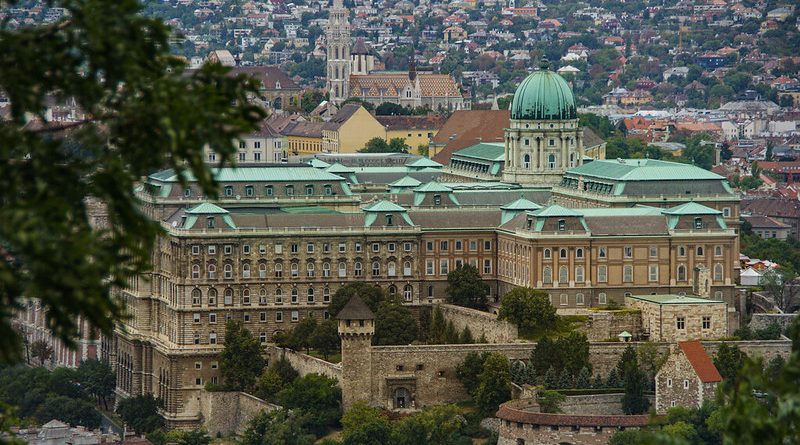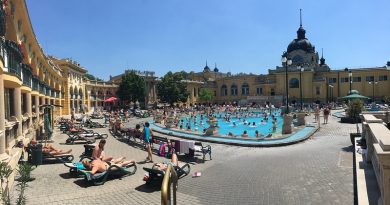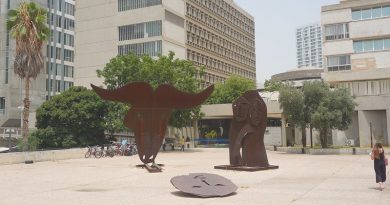The Many Faces of Budapest
If one had to name one city that has shaped the shaped, connected and served south-eastern Europe more than any other Eastern European cities, than there is no way around Budapest.
The capital of Hungary has been the cardinal point of the region in so many ways for so many centuries, for better and for worse, in times in peace and in times of war. Its strategic position on the Danube river was recognised by enemies as well as friends, by Emperors and clever merchants, and it is from here that trade goods were and are redistributed by land, sea (river) and air.
It is little wonder that today’s Budapest echoes and shuwcases it’s many cultural influences .
Soviet Budapest
The Soviet occupation of Hungary followed the defeat of Hungary after World War II. It lasted 45 years and ended in 1991, just before the Soviet Union collapsed and the borders between East and West dissolved again.
The uprising against the Soviets in 1956 was a spontaneous one in the days between 4 – 10 November, and it was brutally crushed by the Soviet troops with air strikes, artillery and a coordinated tank invasion. It would cost the lives of 2,500 Hungarian revolutionaries.
The Soviet occupation has definitely left a lasting mark on the city of Budapest and Hungary as whole; and it feels like the country hasn’t quite shaken off the old militarised East block vibes that are demonstrated in rituals such as this changing of the guards outside the Presidential Residence.
The Soviets added their own piece to the wondrous architectural and cultural mix that Budapest really is, a city where Hungarian tribes, the Austrian Emperor, and Ottoman rulers have all left their footprint which can be witnessed so easily when wandering the streets of Budapest.
The Ottoman Past
Budapest is well known for its wondrous mix of architectural elements ranging from the Ottoman building to Neo-Gothic cathedrals and Art Nouveau.
During the time of Ottoman occupation in the 16th century, the architectural face of Buda and Pest changed as mosques and old Turkish baths were erected in the typical Ottoman blend of Persian, Mamluk and Byzantine elements.
Budapest is in fact one of the few places in the world with functioning original Turkish bathhouses from the 16th century, and it is known as the city of bath houses to which thousands of people flock every year to experience the healing thermal waters of Budapest.
At the beautiful Szechenyi bath, you can learn a bit more about the rich and complex history of Budapest and it’s Bath house culture.
Budapest’s Btidges
It was indeed the Hungarian reformer and visionary, Count Istvan Széchenyi, who led the way to important reforms and progress in the region, which would ultimately lead to the unification of the city.
Born into an old, influential and noble family in 1791, Count Széchenyi was deeply impressed by the modernization and upswing that he witnessed in France, Italy and Britain in the 18th century and throughout his political career pushed to make Buda and Pest a major political, cultural and economic centre of Hungary.
He had realized that the greatest potential of Budapest was its strategic position; conveniently located on the Danube, it could be a cardinal point for ship and railway trade with the Middle East and north western Europe. He pushed for the development of infrastructure to accommodate trade and development, the introduction of steamboats on the Danube river, and eventually initiated a bridge construction that for the first time would connect the western and eastern side, Buda and Pest.
The Szechenyi Chain Bridge remains the city’s most impressive iconic landmark, which took ten years to complete and was opened with much fanfare in 1849. The three cities of Buda, Pest and Obuda were finally unified in 1873, after the dual monarchy had been implemented in 1867 with an attempt to quiet the Hungarian strive for independence and strengthen the Habsburg dynasty’s position. Hungary was on the way to become a prosperous region and catch up with the rapid modernization that had infected all of Europe, with ever increasing numbers of ships and trains running up and down the major trade European trade routes.
The Age of Railways
Hungary’s railway traffic had officially begun in July 1846, excluding a few decades of planning, building and setbacks, and it was operated as a private venture at first. The Hungarian State Railway was established in 1868, and the network experienced a rapid expansion with Budapest quickly becoming connected to other major capitals like Vienna, Belgrade and the capital and entrance to the Middle East, Istanbul.
Keleti station is the main international and inter-city railway terminal. Built between 1881-1884 at the height of railway expansion, it demonstrates the same eclectic style that was dominating the architectural scene in Europe at the time, pointing towards the grand adventure spirit and wealth that train travel and railway building into different parts of the continent had generated.
Budapest is also the site of the first subway line in mainland Europe, second after London. It was opened in 1896, and is called the M1 or Millenium Underground. Its carriers are a time capsule, catapulting visitors back to the turn of the century, to a time of great hope and aspirations, travel and exploration.
Opera
The Hungarian State Opera is a neo-Renaissance house, designed by Miklos Ybl. It was built between 1875 and 1884, an expensive undertaking that was financed by the city of Budapest and Austrian Emperor Franz Josef I, who ruled the Austrian-Hungarian dual monarchy at the time. It is one of Europe’s most renowned opera houses with fantastic performances in an absolutely splendid interior design and architectural environment.
Jewish Budapest
Jews have a long history in the region, and they have played a vital role in the arts, business, and science. Before WWII, they made up almost 5% of Hungary’s population, 23% even here in Budapest.
But during WWII, more than half a million Hungarian Jews were deported to concentration camps in Poland. The systematic deportation began mid-May 1944, with 440,000 Jews deported in more than 145 trains going up the railway line to the north. By the end of July in 1944, the only Jews left in Hungary were the Jews in Budapest, through a sheer miracle their deportation was halted after D-Day in the Normandy.
Today Budapest ‘s giant synagogue has been lovingly restored and is one of the largest and most magnificent structures n Europe.




